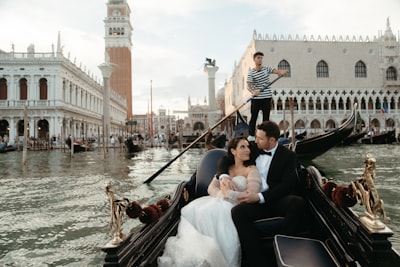When we read headlines about celebrity weddings—especially those as high-profile as Jeff Bezos and Lauren Sanchez exchanging vows in the shimmering ambience of Venice—it's easy to get swept away by the glamour. But beneath the surface of designer gowns and gilded settings lies a fascinating truth: wedding rituals may just be humanity's most universal story.
Imagine this: a thousand years ago, couples in Venice might have crossed the city's famous bridges to be wed, as gondolas drifted by. In ancient Egypt, brides wore elaborate linen dresses and adorned themselves with intricate jewelry, not so unlike the modern preoccupation with the perfect wedding photo. Even the tradition of the white dress—a symbol now synonymous with Western weddings—was only popularized when Queen Victoria married Prince Albert in 1840. Before then, brides wore their best finery, in any color they wished.
Take Sanchez's dress: while the world admires its lines and the romance it adds to the Venetian backdrop, it also reminds us of the powerful symbolism woven into wedding attire across cultures. The sari in India, the cheongsam in China, or the hanbok in Korea—each tells a unique tale of love, community, and hope for the future.
Why do these rituals persist, reinvented generation after generation and across continents? Perhaps because, in a world of constant change, they anchor us to shared meaning—a way to say, here is a new beginning, celebrated in a language that everyone, everywhere, somehow understands.
So the next time you see wedding photos—be they from a billionaire’s gondola ride in Venice or a small backyard gathering—remember you’re witnessing humanity’s oldest party trick: weaving dreams into fabric, and love into history.
This article was inspired by the headline: 'Lauren Sanchez shares picture of wedding dress as she marries Jeff Bezos in Venice'.

Comments
No comments yet. Be the first to comment!